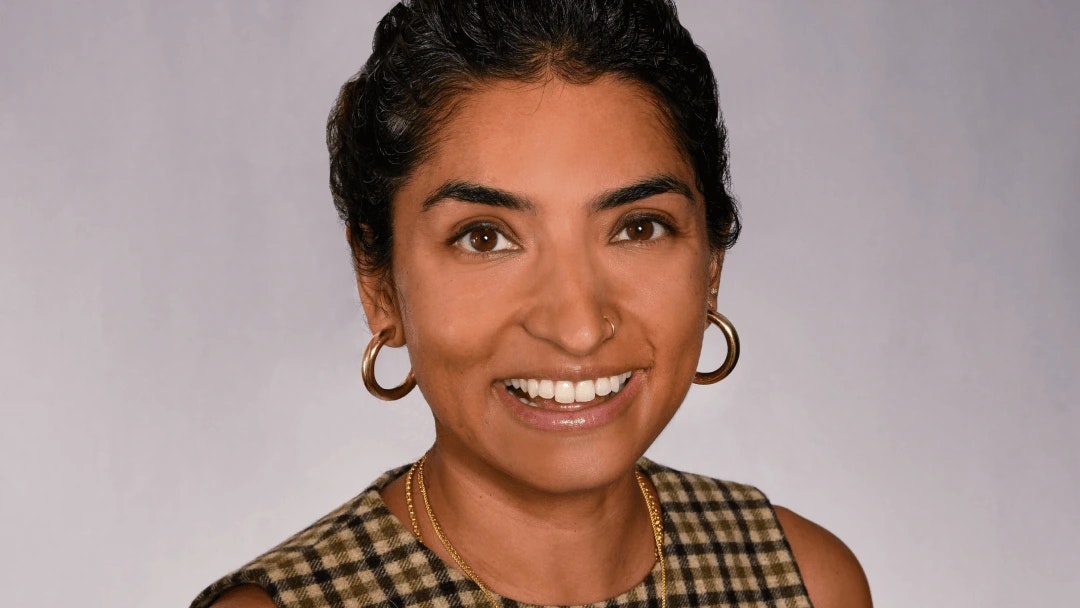The Future of Personal Finance Management
Listen on Apple Podcasts, Spotify, or your favorite podcast app.
This week’s Future of Fintech is on the future of personal finance management, discussing COVID's impact on personal finance habits, why PFM is a fit for younger generations, the future of consumer apps as PFM tools, and more.
Future of Fintech is hosted by Immad Akhund, founder and CEO of Mercury, and Sheel Mohnot, Partner at Better Tomorrow Ventures.
Guests for this week include:
- Haroon Mokhtarzada, CEO of Truebill
- Yinon Ravid, CEO of Albert
- Aditi Shekar, CEO of Zeta
- Peggy Mangot, Partner at PayPal Ventures
- Kanyi Maqubela, Partner at Kindred Ventures
Highlights from Future of Fintech: Personal Finance Management
This interview has been lightly edited for length and clarity.
How has the pandemic changed consumer habits and how have your products adapted?
ADITI (Zeta): One in four families in the US has experienced job loss. They've lost some income and are strapped for cash. Couples want to get more on the same page. They're at home together and are talking about these issues. We've seen an increase in signups and engagement. We're seeing folks use up their emergency funds because of job loss, or we're seeing folks double down on their emergency funds.
YINON (Albert): Customers come to Albert to save. We're a primary savings account for a lot of our customers. What we've seen most weeks is positive net savings. There are few weeks per year that are usually net negative. Those are around Black Friday and the holiday season.
All of that went out the door in 2020. People aren't spending their savings. They're back to hoarding again. I suspect we'll see that, as vaccines become widespread, people will become net spenders.
How is this changing what fintechs are doing for people?
HAROON (Truebill): One of the other trends we saw was the explosion of the subscription economy. Suddenly, groceries became an Instacart subscription. People shifted spend into things that could be done in quarantine, like using entertainment subscriptions.
When people perceive a threat, they become more aware of what they're doing with their money. There's less opportunity for going out.
PEGGY (PayPal Ventures): Access is the biggest barrier to PFM. Young people, with a thin credit file, have a difficult time opening an account online. COVID pushed improvements from digital banking to large banks, which many look to.
Is the future of PFM going to happen in challenger banks like Albert?
YINON (Albert): Customers expect more from products as they mature. There are somewhere from 8 to 10,000 banks and credit unions. A lot have gone from brick and mortar to digital. But now you have challenger banks. They start by providing an easy way to get a checking account. But customers will expect their bank account to do more for them, whether it's to look at their subscriptions, save, invest, get them insurance, or have somebody to talk to.
HAROON (Truebill): A bank was an institution where you had a 20 year relationship, starting in college. That may change. Do we really think Apple, Google, or Facebook will not launch banks?
People will more readily switch bank accounts. The things that made switching difficult in the past, like direct deposit, are becoming super easy; for example, through APIs where you can type in a password and change your direct deposit. The stickiness factor will not hold long-term.
YINON (Albert): The concept of a bank account is going away. Of course, you need a checking account to do basic things. But what you expect from your bank account is changing. You're going to see bank accounts do a lot more stuff for people.
Keep up with the industry’s sharpest minds, right from your inbox.
Credit Karma built a massive business taking advantage of free credit reports. Now, every traditional banking platform has the same feature. Is the time from innovating new features to incumbents copying them shrinking?
HAROON (Truebill): The engagement on these features is tiny. Bank of America has a PFM buried inside of their app. It's difficult to find, and also bad. I would be surprised if they can build a better product than a team that is living and breathing in that product and its problem set.
ADITI (Zeta): Any product you launch is highly imitable and copyable. One example of folks who have differentiated themselves is Chime. Getting paid two days early was not something Chime built out. But Chime actually built a brand that helped their segment feel seen and recognized. They really understood how to KYC their customer. You're going to see a lot more brand and data moats.
Many PFMs started by helping people manage their money. But then they switched to multiple lines of business. Do you think there still is business to be had in pure PFM?
YINON (Albert): There are three parts to consider: the customer, the business model, and building a magical product based on the data. Let’s consider middle-class Americans. Their financial profile is a bank account, a few credit cards, and student debt. How much aggregation do you need for that user?
The business model for PFM is hard. For a pure PFM, you've got to do more than aggregation. You have to offer value. The business model that's worked for us is a PFM plus a subscription.
The third piece is having and using data to build a magical experience. You need transaction data for the user, from all their accounts. You can get a lot of that from Plaid, but you don't get real-time data. Without a complete picture, it's hard to provide a magical experience. If everybody was on open banking and the data was great, you can build that. Without that perfect data, it's tough.
ADITI (Zeta): Only a certain percentage of customers are going to give you that access, no matter how easy you make it. But you know what this segment is having trouble with. They're having trouble with credit building and student debt. They should be refinancing some of their debt. You're going to have to make assumptions to engage them. You can help them without getting the full picture. Even if open banking was prolific in the US, what percentage do we think we could get?
YINON (Albert): Once customers give you access, the primary barrier is that the data is not good enough. If you control their bank account, you see everything. But if you're getting aggregated data from Plaid, you are dependent on a network of banks and credit unions, some of whom have APIs in Plaid, some of whom don't.
ADITI (Zeta): People don’t care about innovation or magic, necessarily. What they care most about is reliability. PFM tools are unreliable. Customers don't understand that there's a whole bunch of infrastructure on the backend.
HAROON (Truebill): I don't think this problem is unsolvable. While some banks won’t be supported, Plaid is cutting deals with the largest banks to have reliable connections. It's a never ending project. We've got to at least allow users to correct the data if we get it wrong. A million transactions are categorized every month by our users that we feed back into the system.
Is there a fintech opportunity for someone to map transaction data to the necessary metadata?
YINON (Albert): It is a solvable problem. The connections with Chime are just fine. They work great because Chime has implemented Plaid's API. But it's a process. If the data was magically real-time, and one day it will be, there'll be another wave of PFM apps.
ADITI (Zeta): Folks are using many tools, and that is probably going to continue. Couples find it valuable to see one picture of all of their numbers. They have a Google Sheet somewhere that they've been using to track finances. But they want a more accurate and real time version of that.
Some parts of PFM are incredibly powerful and can be integrated into the banking experience. I'm just not convinced it needs to stand alone as its own experience; it can get a lot more powerful if layered into a holistic experience.
HAROON (Truebill): People are still going to aggregate data in some way. The only way you can know what's going on with your finances is to either do mental math or have a spreadsheet. That doesn't feel right to me, long-term. Some people may consolidate all of their finances within one institution. That's great, but it’s a tall order to ask everybody to pick just one institution. It just seems strange that, in 2020, you can't go to a website or an app and just see your whole financial picture.
Is seeing the whole financial picture valuable on its own? Or do you have to add more to it?
HAROON (Truebill): Add in other features to make it compelling. A lot of people are going to make self-driving, automated finance tools. You can't make everybody financially literate. Frankly, people don't actually need to get financially literate. They just need to make better decisions. If you can do that for them, that's the easiest way to accomplish that.
ADITI (Zeta): I struggle with the definition of PFM. It's so budget, day-to-day, money management-focused. If you look at the financial needs of different segments, they’re different. Moderate-income people need help with student loans. Then once someone has a mortgage, the biggest opportunity to save them money is on mortgage refinancing.
If you look at higher income segments, they're looking at alternative investments. This focus of PFM as just a budgeting app is antiquated.
What if seeing the whole financial picture isn’t that important? What if people would rather receive data on select things to improve on?
YINON (Albert): You can't answer this question the same way for a 22-year-old out of college as for a 32-year-old with a child. If you're just out of college, you don't need to see all your finances in one place. You have a bank account, a credit card, and student loans. It's simple. As things get more complex, people put stuff in spreadsheets. Most customers don't have this complexity yet. So it really depends on who you build for.
ADITI (Zeta): Life-stage really matters. Couples really care. About 60% of couples don't fully combine their finances. They have individual accounts, whether it's an investing, checking, or savings account. They have a desire to see at a meta level, across both users, despite not always sharing accounts. A meaningful segment of our user base does not share every single account with their partner.
There's typically a chief financial officer in every relationship. That person traditionally doesn't love their job. They come to us and say, "Zeta, we need you to get the big picture so that you can take over more of these chores." They're also worried that, if anything were to happen to them, their partner wouldn’t have access to that information.
HAROON (Truebill): Our parents used to balance their checkbooks, and this generation has no idea where their money's going. If you're not looking at what's going on, you're going to be inefficient in the way you're spending money. Much like if you wanted to lose weight and you weren't tracking what you're eating.
ADITI (Zeta): You would open a checking account at a bank and would be given this book to balance your checks. Then we moved online and gave our customers no similar mechanism. Those basic tools should have been mainstream already.
Automation might be the solution, but why hasn't it happened yet?
HAROON (Truebill): People agree on what the journey is. You start with paying your bills on time. Then there’s emergency savings. Then it's paying down high APR debt. Then it's having three months' worth of savings. Then it's getting out of debt or starting to invest money in the market. Then it’s thinking about retirement.
That journey is clear. A proper autopilot product will understand where the user is, how much they can put toward that journey while being safe, and then just make that happen as quickly as possible.
ADITI (Zeta): Everyone's going on the same journey, but the devil is in the details. Self-driving is the end goal, but it has to come down to use cases to be successful. There was this massive surge of PFM tools customized for different use cases: "this PFM is great for freelancers. This PFM is great for couples, this PFM is really great for the W2 employee."
YINON (Albert): The math of self-driving money is straightforward. You could put it in an excel spreadsheet for different personas and cover almost all scenarios in around 50 tabs. But then you are faced with the data problem. If the data is not good enough, then your math doesn't work.
That's where a lot of PFM has got stuck. The infrastructure you need to build is quite large. You end up building banking products, savings products, brokerage accounts, debt repayment. You end up building years’ worth of infrastructure.
Will humans truly trust a robot? Will they press a button and say, "you manage my finances for me and if we're off by a couple of bucks this month, no big deal"?
PEGGY (PayPal Ventures): I'm skeptical that you're going to get consumer adoption. There are nerds like us that are all-over our money and investments. We’re not going to let go of that control.
HAROON (Truebill): But hundreds of thousands of people trust Albert to decide how much to pull out of their checking account. People don't want the cognitive load of deciding. I bet they end up saving a lot more when they're choosing an automated versus manual method of saving.
HAROON (Truebill): There needs to be a definition of financial health. Once there is a definition, you can calculate that metric based on the transaction stream and visible accounts.
If you can do that, you can identify biomarkers for financial health. You can understand who is going upward in their financial health? Who is going downward? What are the biomarkers within those two categories? You can create interventions for users and see if you can modify behavior via those interventions.
YINON (Albert): People are willing to trust. Automated finances already exist. It just exists for a different customer. If you are super wealthy, somebody else invests for you. But it's expensive to pay people that have this knowledge.
Bringing that to a broader market is not remotely controversial in terms of demand. It's just a difficult thing to execute, because you need to remove the advisor. You have to rebuild and that takes time. You can't charge a percentage of AUM, which is how this has been done historically, if customers are coming from a paycheck-to-paycheck situation. But if you can make it work, there's a demand for it.
Want to hear more? Tune in to the podcast episode where we cover lots more. You can also subscribe to Future of Fintech on Apple Podcasts, Spotify, or your favorite podcast app.
Related reads

Mercury’s Periodic Table of Emotion

Dwarkesh Patel’s lessons for founders

Move fast and build trust: Anarghya Vardhana’s tips for early-stage startups
